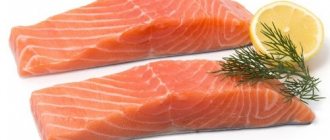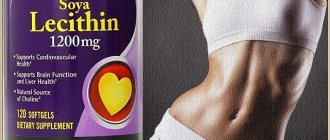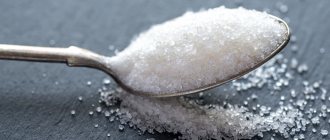It is not uncommon for young people—athletic, fit, and energetic—to accidentally discover that they have high blood sugar levels. This is not surprising, since even unsweetened foods contain sugar. How to find and neutralize it?
“Most people mistakenly believe that sugar is present only in cakes, pastries and other sweets,” says nutritionist-endocrinologist Alexander Semenov. “Added sugar is found in almost all processed foods, even those that leave a sweet aftertaste.”
Semi-finished products (sausages, sausages, bacon, ham)
Even the production of meat products is not complete without added sugar. Even their juicy, real “meaty” color is due to the presence of sugar in semi-finished products.
Dangerous zucchini. What foods cause spikes in blood sugar levels Read more
Dried fruits and smoothies
Fruit contains the natural sugar fructose, and when fruit is dried, the sugar becomes concentrated. Thus, dried fruits can end up becoming a source of highly concentrated sugar.
Smoothies are the epitome of healthy living, but they can also be sugar traps, especially those from supermarkets that can be loaded with extra sugar.
Tip for smoothie lovers: When you buy or make smoothies, choose ones that contain 2/3 vegetables and 1/3 fruit.
Some numbers to keep in mind when you read food labels:
- 1 gram of sugar is 4 calories
- 4 g sugar is 1 teaspoon sugar/1 sugar cube
Share link:
5 / 5 ( 5 votes)
Sweet drinks
Absolute record holders for sugar content. Sweet soda, fruit juices and nectars are not inferior in sugar content to sweets and cakes. A glass of grape juice, for example, has the same calorie content as a serving of chocolate cake. But if a person usually controls the number of desserts eaten, then when consuming sweet drinks he loses his vigilance. This is why “liquid calories” are considered more insidious than “solid” ones.
Avoid diabetes. How to replace products with sugar Read more
How to detect hidden sugar in foods
We all know that excess sugar in the diet is a direct path to many dangerous diagnoses, including type 2 diabetes, cardiovascular diseases and cancer. But the difficulty is that even those who try to monitor their sugar consumption cannot always obtain objective information. Because food manufacturers are willing to go to great lengths to hide the real ingredients. This is how it most often happens.
There is sugar, but it is called differently
On the label we see several dozen names that essentially mean sugar. And if glucose or fructose is quite easy to identify, sometimes the formulations turn out to be so vague that only an expert can understand the terms. For example, dextrose is a sugar derived from corn, levulose is another name for fructose (fruit sugar), and molasses is a byproduct of sugar production.
– In accordance with MP 2.3.0122-18.2.3 (methodological recommendations. – Editor’s note), added (free) sugars are considered to be mono- and disaccharides added to food products during production. Added sugars include natural sugars present in honey, syrups, fruit juices, etc., says Irina Svyatoslavova, deputy director for scientific work at VNIIKP, a branch of the Federal Scientific Center for Food Systems. V. M. Gorbatov" RAS, Ph.D.
Sugar seems healthier
Some sweeteners have traditionally been perceived by consumers as "healthier" than regular white sugar. Cane sugar, agave syrup, coconut nectar or date syrup are most often used in the production of “healthy” products - cereal or protein bars, whole grain cereals.
Some of these types of sugar do differ in taste or amount of nutrients, but this does not change the overall essence. Whatever the name of the ingredient - syrup or nectar, processed or unprocessed, brown or white - it is still sugar.
– Added sugar is usually a mixture of simple sugars such as glucose, fructose or sucrose. Other types, such as galactose, lactose and maltose, are less common, - Anna Krivosheeva, endocrinologist, nutritionist, Medsi CDC on Belorusskaya.
Glucose and fructose are the most common sugars and are often found together and have very different effects on the body. Glucose can be metabolized by almost every cell in the body, while fructose is almost completely metabolized in the liver. Research has repeatedly demonstrated the harmful effects of high fructose intake. These include insulin resistance, metabolic syndrome, fatty liver disease and type 2 diabetes. While you should avoid consuming any additional sugar, it is especially important to minimize your intake of high fructose added sugars.
Better sweeteners are those that have a low glycemic index, are not too high in fructose, and have additional nutrients that are missing from regular sugar. These include date syrup, natural maple syrup, honey, coconut sugar, and molasses. However, these sugars are not the best source of beneficial nutrients. To get any significant amount of calcium or iron, you would have to eat an absurd amount of sugar.
There is no need to avoid natural sugars - those found naturally in whole foods. Fruits, vegetables and dairy products naturally contain some sugar, but they also contain fiber, nutrients and a variety of beneficial nutrients.
The most effective way to reduce your sugar intake is to eat mostly whole, unprocessed foods. However, if you buy prepared foods, pay attention to the label and the many different names for sugar.
Added sugars to avoid:
- Artificial and low-calorie sweeteners such as aspartame, sucralose, saccharin.
- Chemically produced high fructose corn syrup.
- Agave. Although agave gained fame for its low glycemic index, it was eventually proven to have a very high fructose content.
- Sugar alcohols such as xylitol, erythritol and sorbitol are generally considered safe and are most often found in chewing gum and toothpastes because they have been found to protect against tooth decay. They also have a low glycemic index. The problem is that the body can't digest most sugar alcohols, so they end up in the colon where they are metabolized by gut bacteria. Consuming large amounts of sugar alcohols in a short period of time can lead to gas, bloating, and diarrhea.
Calculating the exact amount of sugar is not an easy task.
Even if you manage to recognize the hidden names of sugar, it can be very difficult to calculate the exact amount of sweeteners in certain products. Yes, manufacturers most often indicate the amount of sugar on the packaging. However, these are usually added (free) sugars. And no one mentions that dairy products or fruits inherently contain a certain amount of sugar. Therefore, the total amount of sugar may be significantly higher than what is stated on the label.
Important! How to read a label
- The higher an ingredient is on the list, the more of it there is. But please note: a product may contain several sources of sugar. For example, there are five of them on this label: invert sugar syrup, sugar, glucose syrup, honey and molasses.
- If there are several sources of sugar, a detailed nutritional value table on the label will help. In particular, the “Carbohydrates” section, which should indicate the amount of sugars. This will help you calculate the total amount of sugar in the product. Unfortunately, such tables are not present on all products; their placement is currently not mandatory.
- Pay close attention to information about the amount of sugar in relation to the daily norm. For example, in a cereal bar, the manufacturer may calculate this ratio only for added sugars and indicate 11% of the daily value. But if you take into account all the sugar (in cereals, fruits, berries), then the bar can reach 80-90% of the daily value.
The "Sugar Free" label may not mean what you think.
The packaging may say “Sugar Free.” What does it mean? That there are no added sugars in it, but natural sugar (from fruit juice, puree or paste) may well be in the composition. A scandalous incident can be cited as an example. In a study by Which? We found a cocoa hazelnut bar from a well-known breakfast cereal company labeled “No Sugar Added.” However, the composition contained date paste and cereals, which contain at least 13 g of sugar per 100 g. The company was then forced to issue an official statement stating that date paste is not used to give the product a sweet taste, but and so that the grains stick together and the bars do not fall apart. Thus, according to the manufacturer, the bar may well have the inscription “No added sugar” on the label.
Sweets and confectionery products often use different sugars, each of which plays its own role in the manufacturing technology.
– First of all, we must remember that confectionery products are products that complete a meal, but cannot in any way be the main dish. Desserts are rather intended for pleasure, and considering them as a source of nutrients is not entirely correct. At the same time, sugars play an important technological role in confectionery products. So, sucrose is the component that primarily provides the desired structure, texture and consistency. Molasses and invert syrup protect confectionery products from drying out, becoming stale and sugaring. And only then these are the components that give sweetness,” says Irina Svyatoslavova.
It should be taken into account that confectionery products are multi-component products. Therefore, added (free) sugars can come from various components: molasses, invert syrup, fructose, glucose, honey, jams, condensed milk, dried fruit powders.
In accordance with TR CU 022/2011 “Food products regarding their labeling”, the labeling of packaged products must contain nutritional value indicators (energy value (calorie content), amount of proteins, fats, carbohydrates, amount of vitamins and minerals). The manufacturer is not required to indicate the amount of added sugar or total sugar.
Is it possible to completely eliminate sugar from your diet?
It is unlikely that this will succeed. Sugar is also present in healthy foods (fruits, vegetables, cereals, etc.), which should not be avoided. And doctors do not approve of complete “sugar abstinence.” A lack of glucose and fast carbohydrates leads to apathy and nervous breakdowns, especially in people who are constantly under stress (that is, the majority of “effective managers” and simply actively working people). Eating sweet foods activates the pleasure centers in the brain, resulting in a feeling of euphoria.
However, sugar is only useful in “therapeutic doses.” The World Health Organization, for example, recommends consuming no more than 50 g per day (10–12 teaspoons). This includes not only obvious sugar, but also hidden sugar (contained in products), as well as brown (cane) sugar, which most people consider healthy and harmless.
Such sugar actually contains valuable microelements, but even natural cane sugar (which is not so easy to find in stores) cannot be called dietary. It is the same carbohydrate as white refined sugar.
List of delicious sugar-free foods
Low Carb Vegetables
- Zucchini – 7g in one medium-sized fruit. This vegetable will be an excellent replacement for pasta and potatoes in side dishes for meat dishes. The product is famous for its large amount of useful substances: potassium, magnesium, vitamins B6 and C.
- Cauliflower – 5 g per cup. By the way, this vegetable contains a decent supply of antioxidants.
- Swiss chard – 1 g per cup. Can be fried or used raw for salads.
- Champignons – 2 g per cup. Good not only for weight control, but also for strengthening the immune system.
- Celery – 1 g in 1 stalk. An excellent source of vitamin K, which is necessary for the absorption of calcium. It requires more energy to digest than it provides.
Other low-carb vegetables: cherry tomatoes, bell peppers, arugula, spinach, asparagus, Chinese cabbage.
Fruits with low carbohydrates
- Apricots – 8 g in two fruits.
- Avocado – 16 g in one piece.
- Strawberries – 11 g per cup.
Other low-carb fruits: watermelon, peaches, rhubarb, blueberries.
Meat and fish
The following products contain 0 g of carbohydrates per 100 g:
Chicken drumstick, pork tenderloin, steak, roast beef, elk, chicken, ground beef, turkey breast. These foods can be the basis of your diet if you want to lose weight or build muscle.
Pointed question
Is it possible to get diabetes if you eat a lot of sweets?
Research shows that 30% of people do not develop diabetes, even if they eat a lot of sweets and exercise little.
Article on the topic
One step away from diabetes. What is prediabetes and how to identify it But most people, on the contrary, are carriers of the insulin resistance gene, in which cells stop absorbing glucose, which leads to an increase in its level in the blood. If such a person eats poorly and neglects physical activity, he is likely to develop diabetes. Therefore, people prone to weight gain need to stick to a low-calorie diet (1500–800 kcal per day) and monitor their blood sugar levels.
The most reliable test that can reliably diagnose diabetes is the glycated hemoglobin test, which shows the average blood sugar level over 2-3 months).
By regularly taking this test, you can catch the disease at the prediabetes stage, when symptoms are completely absent, sugar levels are above the normal limit (5.8–6.1 mmol/l), but have not yet reached critical values (above 7 mmol/l).
Prediabetes is completely reversible with proper nutrition and sufficient physical activity. It is known that consuming fiber and 2 hours of physical activity per day reduces the risk of developing diabetes by 14%.
How Hidden Sugar Harms You during Pregnancy
Due to increased levels of hormones in the blood, the needs of the fetus and placenta in pregnant women, glucose levels decrease rapidly. To even out the situation, the pancreas begins to produce more insulin than before pregnancy. If for some reason this does not happen, women develop gestational diabetes mellitus. Excessive consumption of refined sugar and sweetened foods with hidden sugar can make the situation worse.
The body of a pregnant woman consumes more energy and the expectant mother is often drawn to make up for these costs with sweets. But instead of another portion of cake, it is better to reconsider your diet and eat more often, but in smaller quantities.
If you consume a large amount of foods with hidden sugar, this will lead to a number of unpleasant consequences:
- Increased body weight of the expectant mother, as well as the fetus, which can cause problems during childbirth.
- With sugar, essential vitamins and minerals are washed away, which are needed not only by the pregnant woman, but also by the developing fetus.
- Problems with the gastrointestinal tract may occur.
- By consuming foods with hidden sugar, a woman eats less healthy food and does not receive enough vitamins and minerals.
Women who abuse sweets and foods containing hidden sugar are more likely to:
- candidiasis or thrush,
- gaining excess weight,
- malfunction of internal organs,
- deterioration of dental condition.











